- With standard equipment
- With safety pack
Find more information in the General Comments section of the assessment
Find more information in the Rating Validity tab of the assessment
- See More
- See More
- See More
- See More
- Good
- Adequate
- Marginal
- Weak
- Poor
 Rear Seat
Rear Seat
 Front Seat
Front Seat
- Good
- Adequate
- Marginal
- Weak
- Poor


Passenger
outboard
center
Fitted to the vehicle as standard
Not fitted to the test vehicle but available as option
Not Available
-
i-Size CRS
-
ISOFIX CRS
-
Universal Belted CRS
Easy
Difficult
Safety critical
Not allowed
| Seat Position | ||||
|---|---|---|---|---|
| Front | 2nd row | |||
| Passenger | Left | center | Right | |
| Maxi Cosi 2way Pearl & 2wayFix (i-Size) | ||||
| Maxi Cosi 2way Pearl & 2wayFix (i-Size) | ||||
| BeSafe iZi Kid X2 i-Size (i-Size) | ||||
| Britax Römer TriFix2 i-Size (i-Size) | ||||
| BeSafe iZi Flex FIX i-Size (i-Size) | ||||
| BeSafe iZi Combi X4 ISOfix (ISOFIX) | ||||
| Cybex Solution Z i-Fix (ISOFIX) | ||||
| Maxi Cosi Cabriofix (Belt) | ||||
| Maxi Cosi Cabriofix & EasyFix (Belt) | ||||
| Britax Römer King II LS (Belt) | ||||
| Cybex Solution Z i-Fix (Belt) | ||||
Easy
Difficult
Safety critical
Not allowed
With the exception of the neck of the 10 year dummy in the frontal impact, dummy readings indicated good or adequate protection of all critical body areas for both child dummies. The front passenger airbag can be disabled to allow a rearward-facing child restraint to be used in that seating position. The status of the airbag is clearly indicated to the driver and the system was rewarded. All of the restraint types for which the Golf is designed could be properly installed and accommodated.
- Good
- Adequate
- Marginal
- Weak
- Poor

Head Impact 17.0 Pts
Pelvis Impact 6.0 Pts
Leg Impact 6.0 Pts
| System Name | Front Assist | ||
| Type | Auto-Brake with Forward Collision Warning | ||
| Operational From | 6 km/h | ||
| PERFORMANCE | | |||
-
Cyclist from nearside, obstructed view
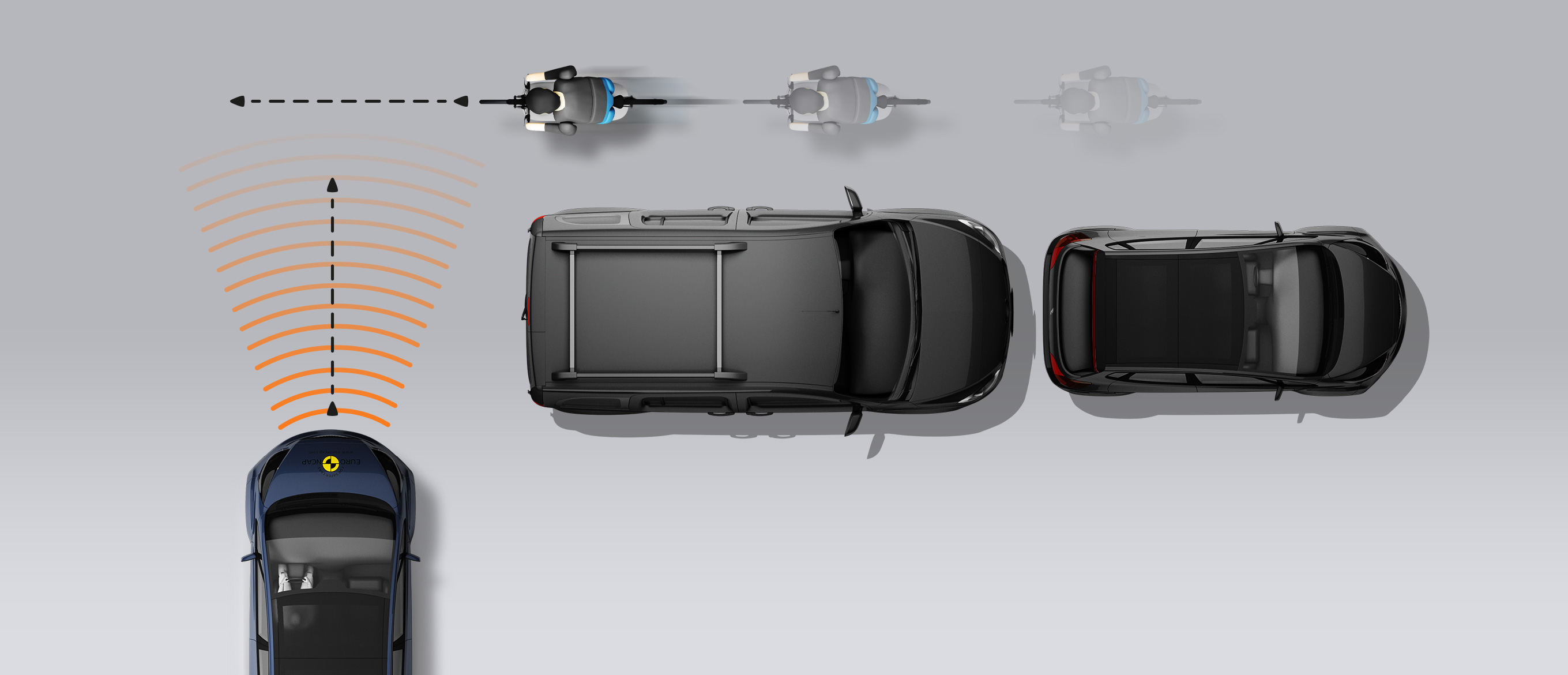
-
Approaching a crossing cyclist
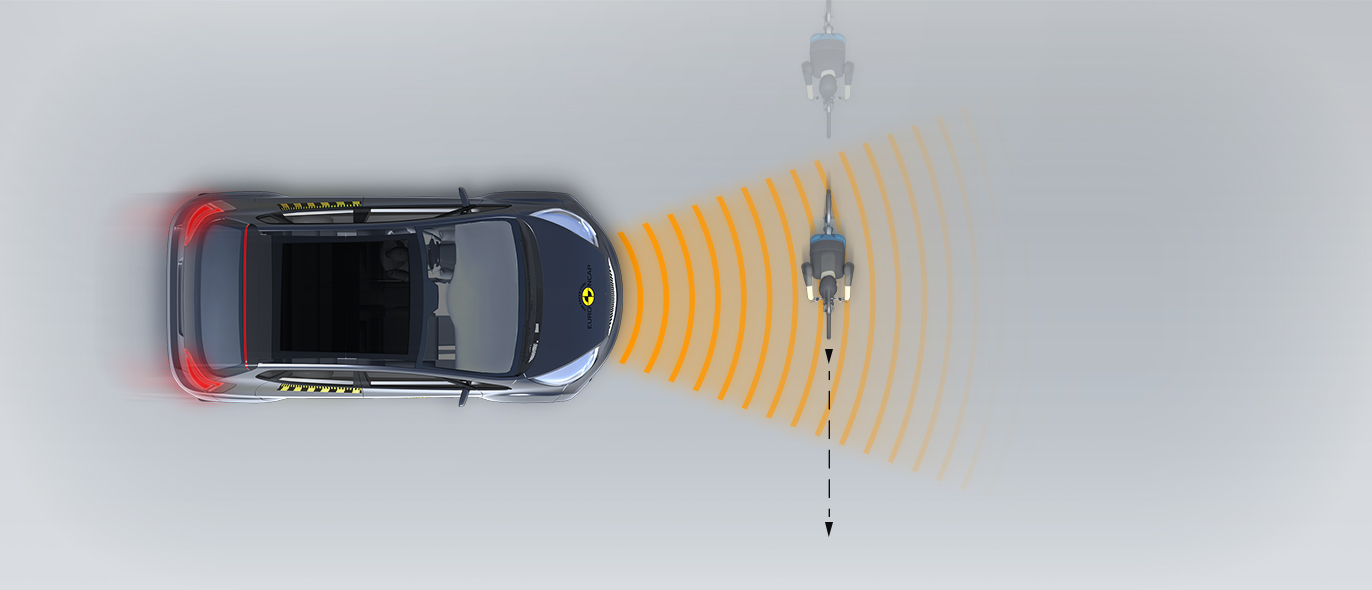
-
Cyclist along the roadside

The bonnet provided predominantly good or adequate protection to the head of a struck pedestrian. The bumper offered good protection to pedestrians’ legs and protection of the pelvis region was also good at all test locations. The autonomous emergency braking (AEB) system of the Golf can respond to vulnerable road users, as well as to other vehicles. The system performed adequately in tests of its response to pedestrians and cyclists, with collisions avoided in most scenarios.
- Good
- Adequate
- Marginal
- Weak
- Poor
| System Name | Speed Limiter |
| Speed Limit Information Function | N/A |
| Speed Control Function | Manually set (accurate to 5km/h) |
| Applies To | Front and rear seats, including third row | ||
| Warning | Driver Seat | Front Passenger(s) | Rear Passenger(s) |
| Visual | |||
| Audible | |||
| Occupant Detection | |||
|
|||
| System Name | Driver Alert System |
| Type | Steering input |
| Operational From | 60 km/h |
| System Name | Lane Assist |
| Type | ELK + LKA (including LDW) |
| Operational From | 60 km/h |
| Performance | |
| Emergency Lane Keeping | |
| Lane Keep Assist | |
| Human Machine Interface | |
| System Name | Front Assist | |||
| Type | Autonomous emergency braking and forward collision warning | |||
| Operational From | 6 km/h | |||
| Sensor Used | camera and radar | |||
The Golf’s autonomous emergency braking (AEB) system performed well in tests of its reaction to other vehicles. A seatbelt reminder system is fitted as standard to the front and rear seats and the car has a system to detect driver fatigue. The lane support system gently corrects the vehicle’s path if it is drifting out of lane, and also intervenes in some more critical situations. A driver-set speed limiter is standard equipment.
- Specifications
- Safety Equipment
- Videos
- Rating Validity
Specifications
Tested Model VW Golf 1.5 TSI 'Life', TSI
Body Type - 5 door hatchback
Year Of Publication 2022
Kerb Weight 1316kg
VIN From Which Rating Applies - all Golfs of the specification tested
Class Small Family Car
Safety Equipment
Note: Other equipment may be available on the vehicle but was not considered in the test year.
Fitted to the vehicle as standard
Fitted to the vehicle as part of the safety pack
Not fitted to the test vehicle but available as option or as part of the safety pack
Not available
Not applicable
Videos
Rating Validity
Variants of Model Range
| Body Type | Engine | Drivetrain | Rating Applies | |
|---|---|---|---|---|
| LHD | RHD | |||
| 5 door hatchback | 1.0 petrol 66kW / 81kW | 4 x 2 |  |
 |
| 5 door hatchback | 1.5 petrol* 96kW / 110kW | 4 x 2 |  |
 |
| 5 door hatchback | 2.0 petrol 140kW / 180kW | 4 x 2 |  |
 |
| 5 door hatchback | 2.0 diesel 85kW / 110 kW / 147 kW | 4 x 2 |  |
 |
| 5 door hatchback | 1.5 CNG 96 kW | 4 x 2 |  |
- |
| 5 door hatchback | 2.0 petrol 235kW | 4 x 4 |  |
 |
| 5 door hatchback | 1.4 PHEV 150kW / 180kW | 4 x 2 |  |
 |
| 5 door wagon | 1.0 petrol 81kW | 4 x 2 |  |
 |
| 5 door wagon | 1.5 petrol 96kW / 110kW | 4 x 2 |  |
 |
| 5 door wagon | 2.0 petrol 140kW | 4 x 2 |  |
 |
| 5 door wagon | 2.0 petrol 140kW / 235 kW | 4 x 4 |  |
 |
| 5 door wagon | 2.0 diesel 85kW / 110 kW | 4 x 2 |  |
 |
| 5 door wagon | 2.0 diesel 110 kW / 147 kW | 4 x 4 |  |
 |
| 5 door wagon | 1.5 CNG 96 kW | 4 x 2 |  |
- |
* Tested variant



Find more information in the General Comments section of the assessment
The Golf was originally assessed in 2019. The updated car has been reassessed against 2022 protocols, with some 2019 tests carried over where applicable.
 Share
Share
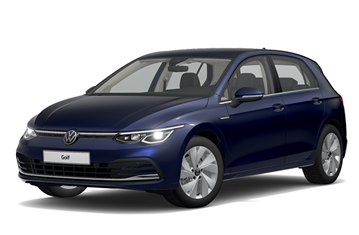
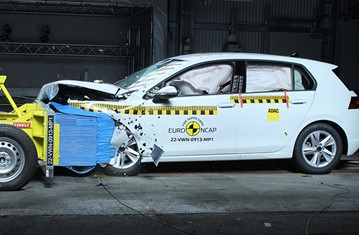
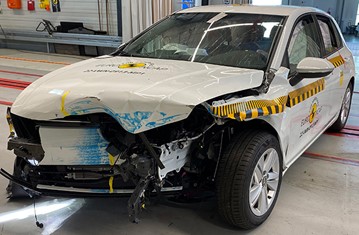
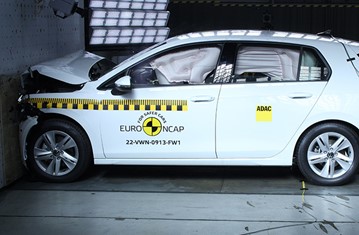
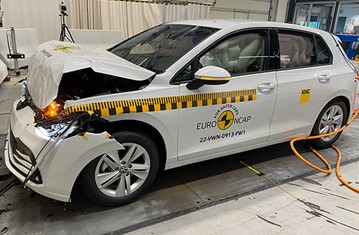
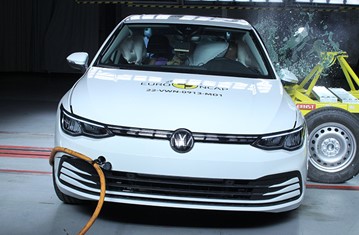
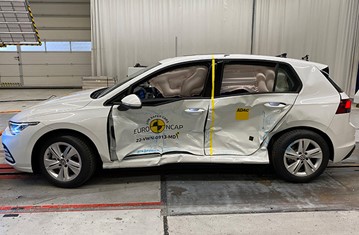
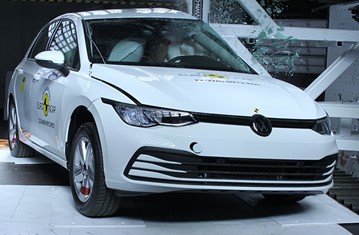
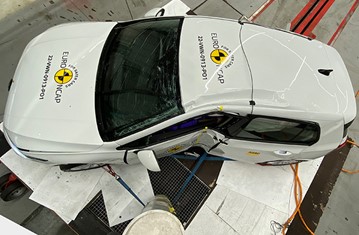
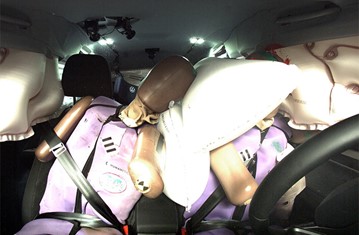
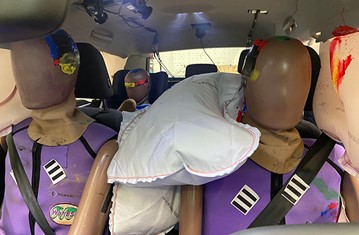








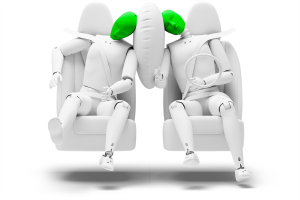
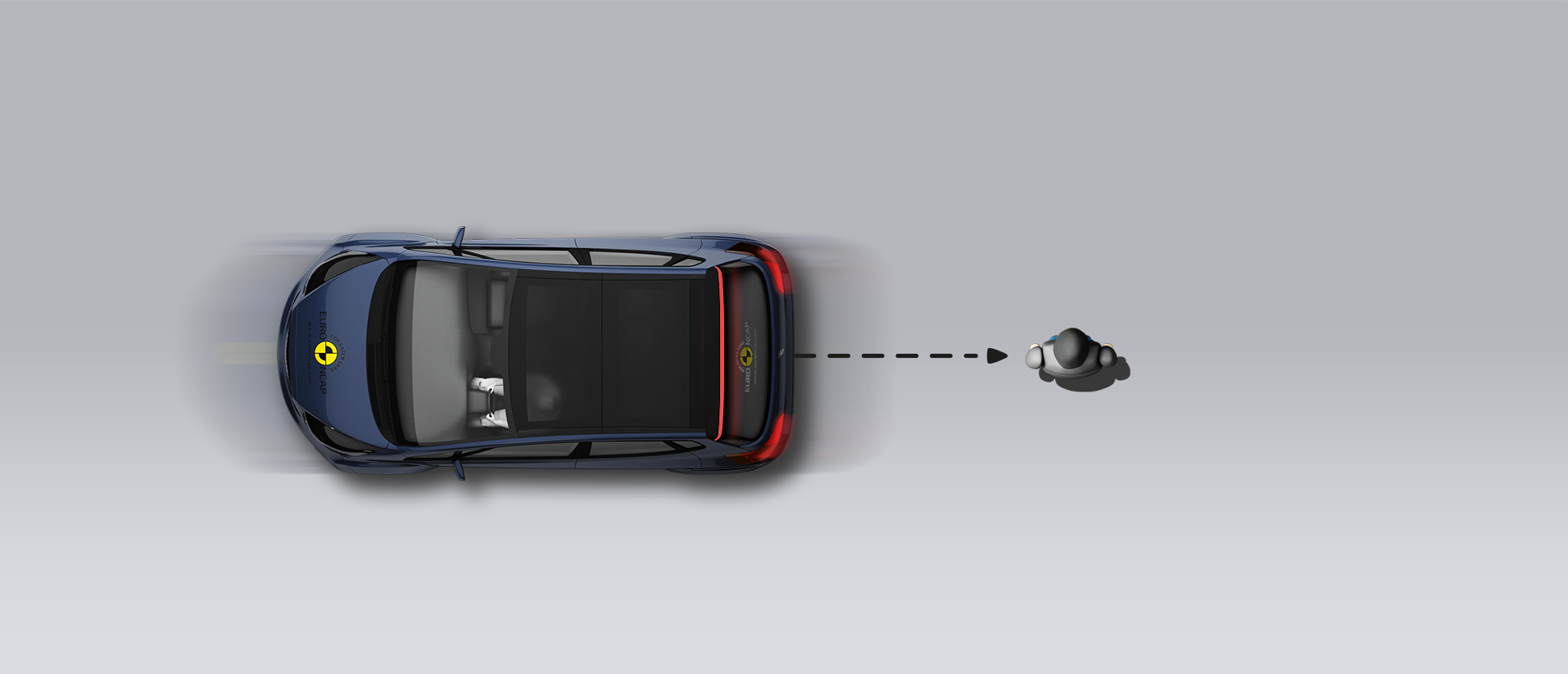
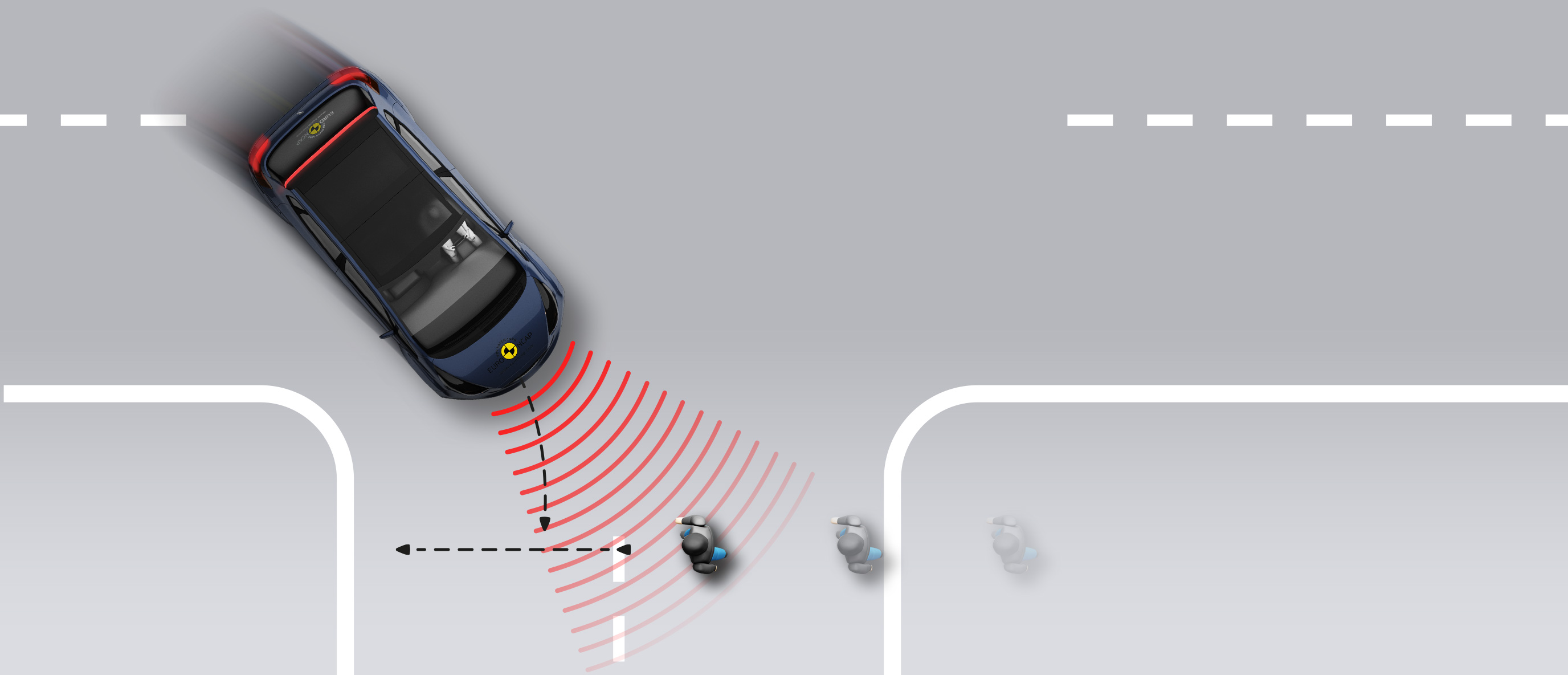

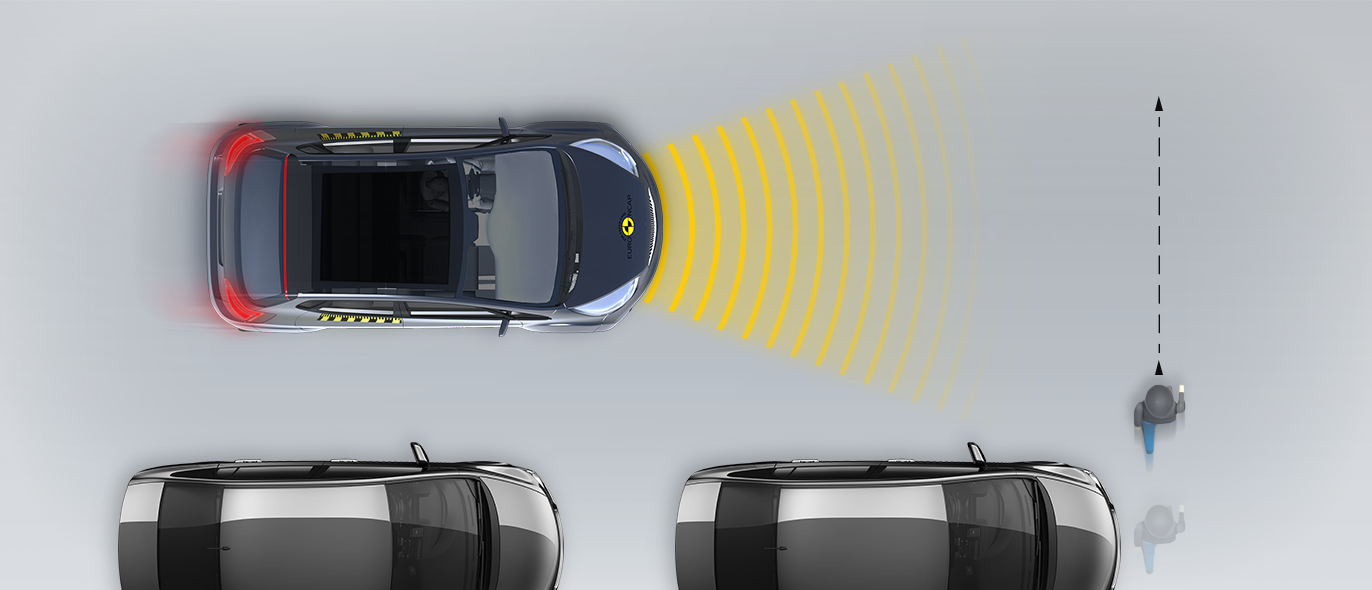



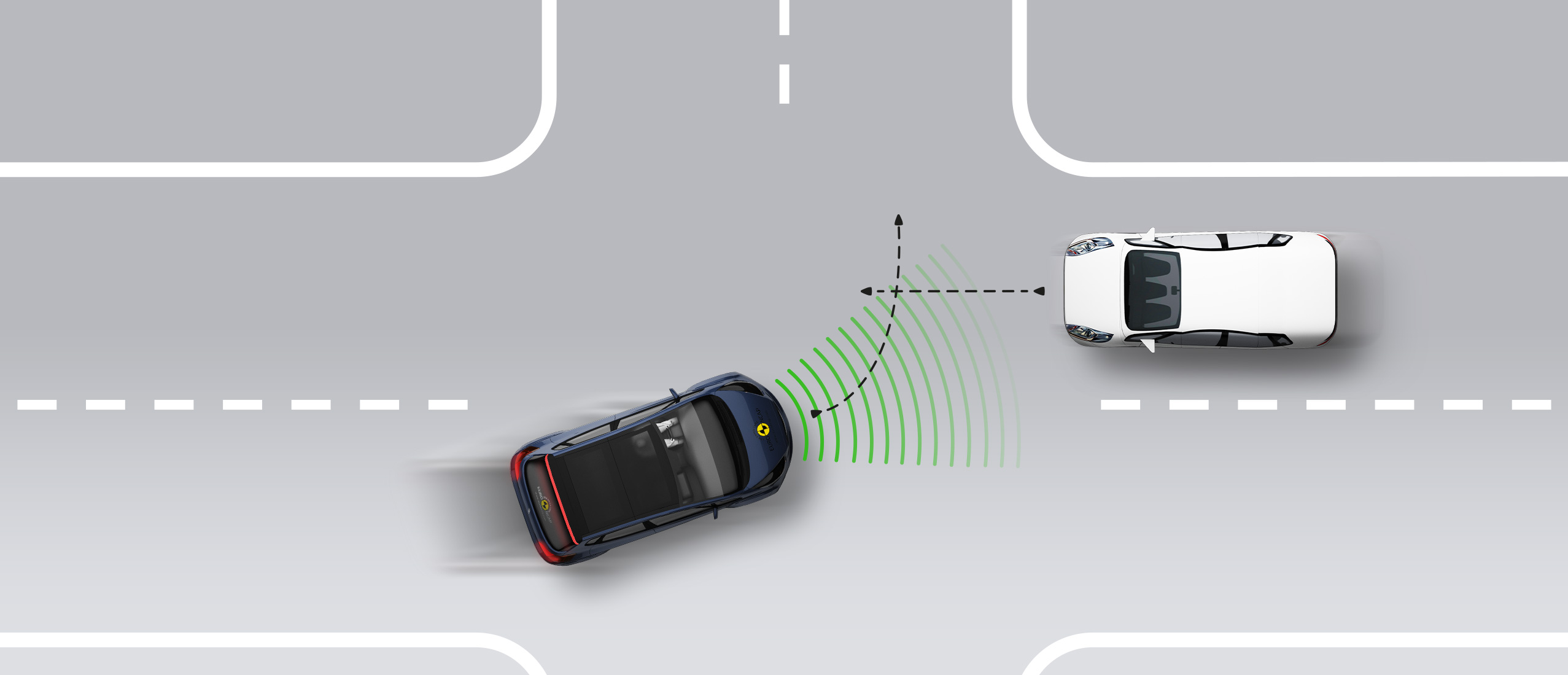








The passenger compartment of the Golf remained stable in the frontal offset test. Dummy numbers demonstrated good protection of the knees and femurs of both the driver and passenger. VW showed that a similar level of protection would be provided to occupants of different sizes and to those sitting in different positions. Protection of the driver’s chest was rated as marginal, based on dummy readings of compression. Analysis of the deceleration of the impact trolley during the test, and analysis of the deformable barrier after the test, revealed that the Golf would be an aggressive impact partner in a frontal collision. In the full-width rigid barrier test, protection of all critical body areas was good or adequate for both the driver and the rear passenger. In the side barrier test, protection of all critical body areas was good and the car scored maximum points in this part of the assessment. In the more severe side pole impact, chest protection was marginal but that of other critical body regions was good. Control of excursion (the extent to which a body is thrown to the other side of the vehicle when it is hit from the far side) was found to be adequate. The Golf has a counter-measure to mitigate against occupant to occupant injuries in such impacts. The system performed well in Euro NCAP’s test, with good protection of occupants’ heads. Tests on the front seats and head restraints demonstrated good protection against whiplash injuries in the event of a rear-end collision. A geometric analysis of the rear seats also indicated good whiplash protection. The Golf has an advanced eCall system which alerts the emergency services in the event of a crash. The car also has a system which applies the brakes after an impact to avoid secondary collisions.